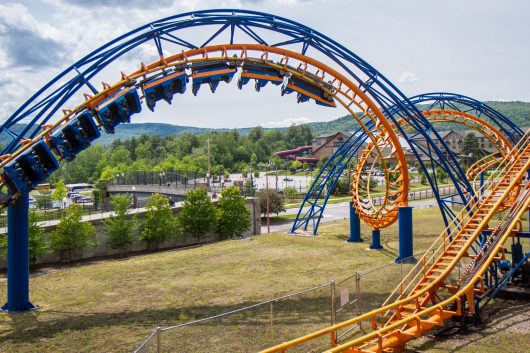It was every amusement-park visitor’s nightmare: In June, at Six Flags Great Escape in Queensbury, a 14-year-old Delaware girl somehow slipped out of her seat on a gondola ride, dangling 25 feet above the ground as onlookers rushed over. Fortunately, disaster was averted as a local man and his daughter positioned themselves under the girl, broke her fall, and prevented a more serious injury or death.
How safe are amusement-park rides, anyway? The International Association of Amusement Parks and Attractions, which represents fixed-site parks such as Disney World and the Six Flags franchise, says the 335 million United States patrons who visit the parks each year take 1.6 billion rides, and that the likelihood of serious injury is minuscule 1 in 6 million.

Photo by: Josh Grenier
But the IAAPA also lobbies heavily against any attempt by lawmakers to reintroduce federal oversight to parks like Six Flags. Instead, the industry is regulated by a patchwork of state and local oversight, with no federal guidelines or inspections since Congress removed fixed-site parks from its realm in the early eighties. And lawsuits stemming from accidents typically end in confidential settlements, with no admission of wrongdoing by the park, leaving the details of safety lapses shrouded in secrecy.
A handful of states don’t regulate amusement parks at all; in New York State, the Department of Labor conducts annual and/or pre-event inspections of all amusement-park devices at both fixed-site parks and temporary attractions like county fairs.
In past lawsuits involving amusement-park accidents, many courts—but not all—have held that amusement park owners must exercise ordinary or reasonable care in the construction, maintenance, and operation of their premises to protect tourists from injury. In this regard, they are held to a standard similar to the owners of common transportation devices such as buses and elevators. Grounds for a successful lawsuit against the park typically involve one or more of several types of negligence (failure to maintain the property, failure to inspect and replace faulty equipment, failure to post clear instructions and warnings, insufficient training of ride operators, etc.). Victims may also file a product-liability claim against the manufacturer of the equipment, if, say, a structural defect caused an accident or a restraining bar became unlatched during a ride.
However, some courts recognize that people who use amusement rides have different expectations than people simply boarding a bus for transportation; specifically, that they are expecting entertainment in the form of high speeds, steep drops, and tight turns. And on occasion, courts may find that the injured tourist assumed the risk of injury by ignoring warning signs and safety instructions.
If you are planning to visit an amusement park this summer, you are encouraged to follow these recommendations to make your day of enjoying the rides as fun and safe as possible:
- Read and follow all instructions and warnings
- Keep your hands and feet inside the ride while it is moving
- Don’t reach toward fences and barriers
- Secure loose clothing and long hair
- Don’t drink or use drugs while riding
- Don’t stand or attempt to leave a ride until it comes to a complete stop
- Make sure restraining devices are properly latched, and don’t unlatch or loosen until instructed by the operator.
If you or a family member has suffered an injury at an amusement park, LaMarche Safranko Law can help. Contact us at (518) 982-0770 or online.
